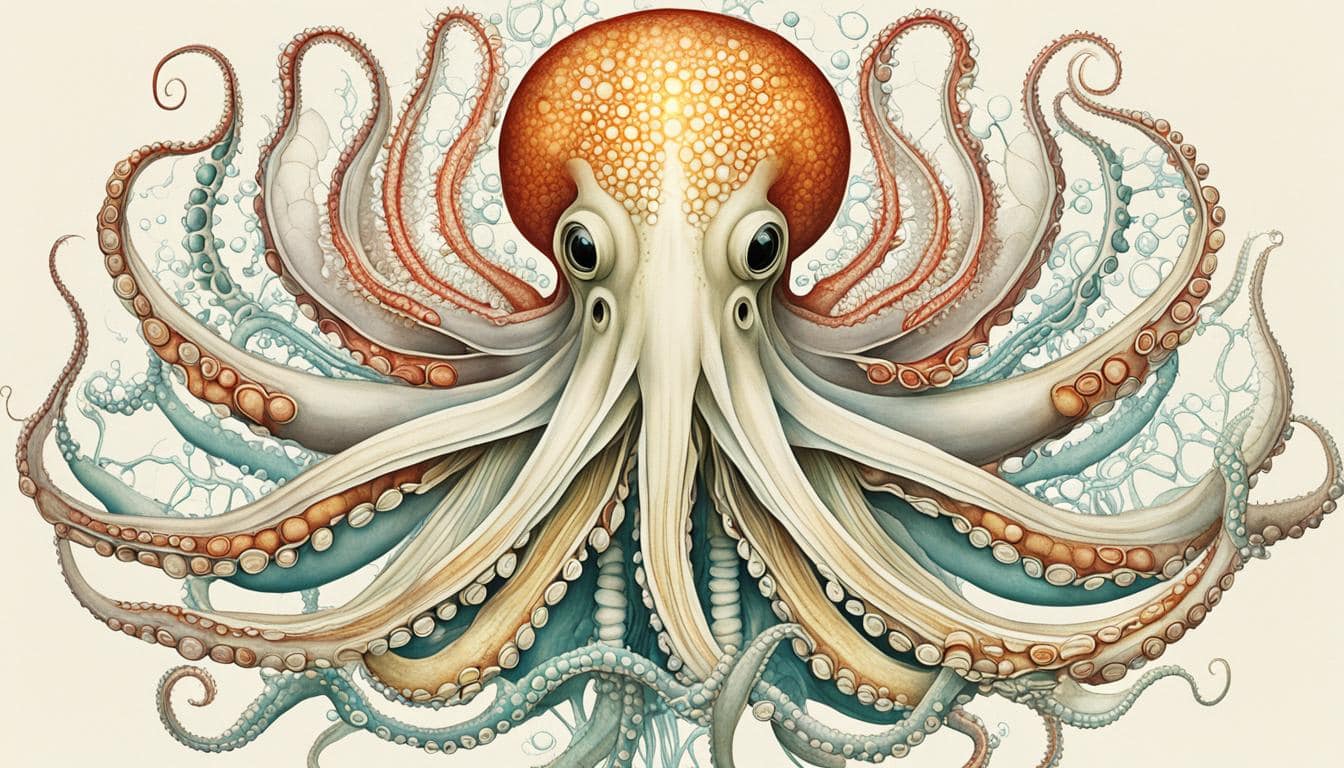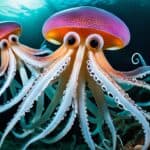Octopuses are amazing creatures with unique ways of reproducing. By learning how they reproduce, you’ll enter a world full of solitary acts and dramatic mating scenes. Their reproduction is a complex process that leads to a fascinating mystery of nature.
As we explore their reproductive anatomy, we’ll see the details that make their life cycles and mating habits so intriguing. This shows how crucial these studies are in marine biology.
Introduction to Octopus Reproduction
Exploring cephalopods starts with their unique way of reproducing. The introduction to octopus reproduction shows how adaptable and special these sea creatures are. Each octopus species has its own way of breeding, shaped by its environment and unique traits.
Octopus reproduction is full of interesting rituals and social interactions. Mating involves complex courtship behaviors. Males and females use these behaviors to attract each other. This shows a deep understanding of what it takes to reproduce successfully.
Studies on octopus reproduction have uncovered many interesting facts. While most species have a similar pattern, each one has its own twist. These differences often depend on their environment. For instance, some octopuses mate in deep water, while others prefer shallower coastal areas.
Learning about octopus breeding behavior helps us appreciate their intelligence and complexity. It shows us how these creatures are more than just fascinating sea animals.
How do octopuses reproduce?
Learning about octopus reproduction shows us how fascinating they are. Octopuses have different ways of mating, but they all have complex rituals. These rituals help them reproduce successfully.
The mating habits of octopuses
Octopus mating is quite complex. Males approach females with care. They use a special arm called a hectocotylus to transfer sperm. This arm is made just for this purpose, keeping the male safe from the female’s attack.
The octopus reproduction process explained
The way octopuses reproduce is really interesting, especially how females behave. After mating, the female lays thousands of eggs and guards them carefully. She picks a safe spot to keep them in good air.
While guarding the eggs, the female stops eating. This leads to her death after the eggs hatch. This shows how much octopuses care for their young, even if it costs them their lives.
Unique Breeding Behaviors of Octopuses
Looking into octopus breeding shows us how interesting their ways of reproducing are. The larger Pacific striped octopus is especially interesting. It has habits that make us rethink how octopuses mate.
Insights into the larger Pacific striped octopus
The larger Pacific striped octopus has unique breeding behaviors. They often eat together, which is rare among octopuses. This shows how they connect before they lay eggs, unlike most octopuses that mate alone.
Contrasting breeding behaviors across species
Octopuses have many different ways of breeding, depending on where they live. While the larger Pacific striped octopus eats with friends, many others mate alone. This shows how these creatures adapt to their environments, changing their ways to survive.

Octopus Reproductive Anatomy
Exploring the octopus’s reproductive anatomy reveals amazing physical traits crucial for mating and reproduction. These traits are essential for their reproductive success. They help us understand the complex world of octopus reproduction.
Understanding the physical adaptations
Octopuses have special organs like the hectocotylus, a unique arm used during mating. This adaptation lets males transfer sperm directly to females, boosting fertilization chances. The optic gland, which produces hormones affecting reproduction, shows how their anatomy supports reproductive success.
These features are key for their reproductive cycle and health. They play a big role in how octopuses reproduce.
Influence of anatomy on reproduction strategies
Different octopus species have unique anatomy that affects their reproduction. For example, some have special behaviors linked to their anatomy, changing mating rituals and egg care. Studies show that anatomy variations lead to different reproductive strategies over time.
This knowledge helps us see the complexity and variety in octopus reproduction. It deepens our understanding of cephalopods and their evolution.
FAQ
How do octopuses reproduce?
Octopuses reproduce in a unique way. Males use special arms to transfer sperm to females. After, females lay thousands of eggs and usually die soon after, ending their life cycle.
What are the mating habits of octopuses?
Octopus mating is quite interesting. Males show off with bright colors and dance to attract females. Some males risk being eaten to protect their chance to mate.
How do environmental factors influence octopus breeding behavior?
Things like temperature, where they live, and food affect octopus breeding. These factors change how they mate, from alone to together.
Can you explain specific reproductive anatomy of octopuses?
Octopuses have special parts for making babies. Males have a special arm called the hectocotylus for sperm transfer. The optic gland helps control their breeding cycles and actions.
What is the significance of the larger Pacific striped octopus in terms of reproduction?
The larger Pacific striped octopus shows how octopuses can mate differently. They live together and share food, showing how diverse octopus reproduction can be.







